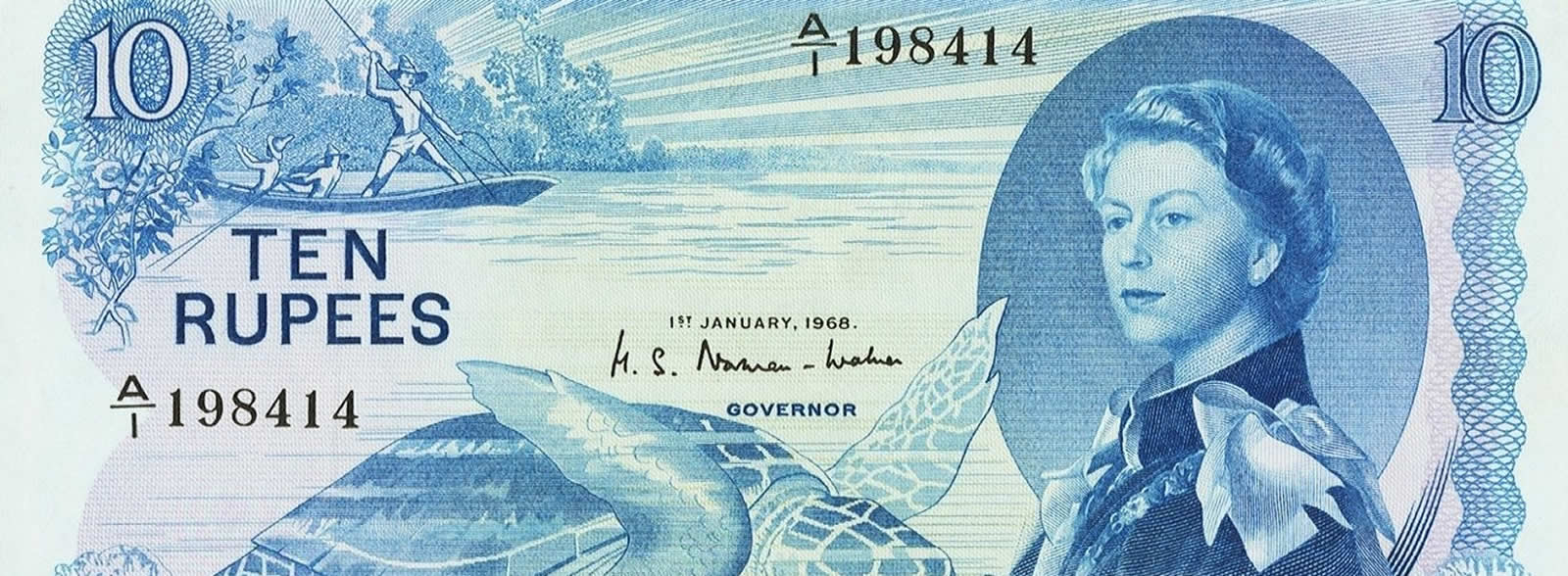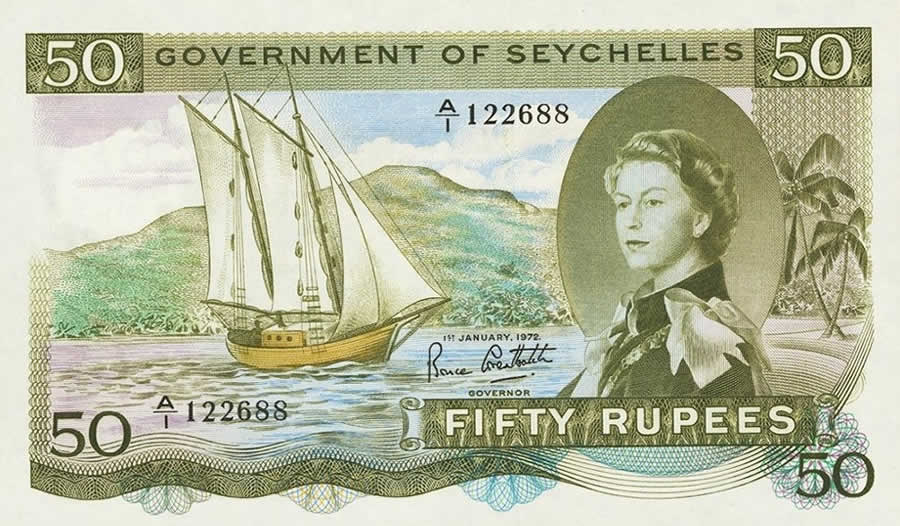DESIGNERS OF SEYCHELLES RUPEES CREATED ONE OF HOBBY’S MORE POPULAR COLLECTIBLES WITH A LITTLE SUBLIMINAL ASSISTANCE
By Craig Eustace
In 1935, Princess Elizabeth appeared for the first time on a Canadian $20 bill. Now, 85 years later, Queen Elizabeth II remains the single most represented public figure seen on paper money printed all over the world. The queen is head of state of 16 countries with about 130 million inhabitants. During her 68 years of rule, she has been depicted on the currency of 33 countries, including about 565 different banknotes, with 31 portrait varieties.
WORLD CURRENCY
Her Royal Highness’ 1955 portrait, by the Italian painter Pietro Annigoni at the request of the Worshipful Company of Fishmongers, is without a doubt one of the most recognizable portraits on banknotes today. Annigoni painted a number of portraits of Queen Elizabeth II between 1954 and 1972. The 1955 portrait, however popular, suffered some early criticism due to its perceived romanticism with the inclusion of a background. A second portrait of the Queen was completed in 1969 with no background at all.
There are numerous portraits hailed as the “most popular” or “my favorite” among numismatists, but none has come with quite as much scandal as the Annigoni portrait of 1955.
Paper money bearing the image of Queen Elizabeth II is unquestionably one of the most popular fields of collecting.
In 1968, the government of Seychelles, an archipelago of 115 islands in the Indian Ocean, commissioned a revamp of their currency. Their paper money, predating the Annigoni issue, was mostly plain in its design and lacking adequate security features needed for the changing times. Bradbury, Wilkinson & Company was the paper currency printer awarded the contract to update the island state’s banknotes. The Central Bank decided to issue five denominations: 5, 10, 20, 50 and 100 Rupees. The 1968 issue circulated until 1975. For the most part, they did a good job. This series of banknotes is arguably among the most aesthetically pleasing ever to have been designed. These examples invariably find themselves on most want lists. But this issuance’s popularity is explained by more than just its pleasant design; it has become infamous for the subliminal messaging found hidden in the notes’ intricate vignettes.
The 50 Rupees (Pick 17) is by far the most well-known example. To the right of the Annigoni portrait, the word “sex” is spelled out in the palm trees. It has since been aptly nicknamed “The Sex Note.” On the 10 Rupees (Pick 15), the word “scum” can be seen tucked away in the coral reef at the bottom left of the note. The last denomination that has come up for scrutiny, and surrounded with furious debate, is the 20 Rupees (Pick 16), with the possible wording of “poop” supposedly written in the coral to the left of the Annigoni portrait. The remaining two denominations 5 (Pick 14) and 100 (Pick 18) Rupees have yet to give up their hidden messaging, if any.
The reasonable question – why this subliminal attempt of subversion or disparagement could or would have happened – is most likely answered by looking at the political happenings of the time.
Seychelles obtained independence from the United Kingdom in 1976. The ink had not even dried on the Declaration of Emancipation when the Annigoni issue was replaced by a new family of banknotes featuring James R. Mancham, the first president of Seychelles. It is speculated that the designer(s) of the 1968 issue might have been in support of independence for Seychelles. Another suggested explanation is that the designer had a naughty sense of humor or was, perhaps, bored. Whatever the reason, it has made for a bit of excitement and a great story.
Paper money bearing the image of Queen Elizabeth II is unquestionably one of the most popular fields of collecting in the banknote world. As the queen finds herself the world’s longest reigning monarch and shows little sign of slowing down, we could, perhaps, expect more new and interesting portraits still to come.
 CRAIG EUSTACE is a consignment directory in the World Currency department at Heritage Auctions.
CRAIG EUSTACE is a consignment directory in the World Currency department at Heritage Auctions.
This article appears in the Fall 2020 edition of The Intelligent Collector magazine. Click here to subscribe to the print edition.



